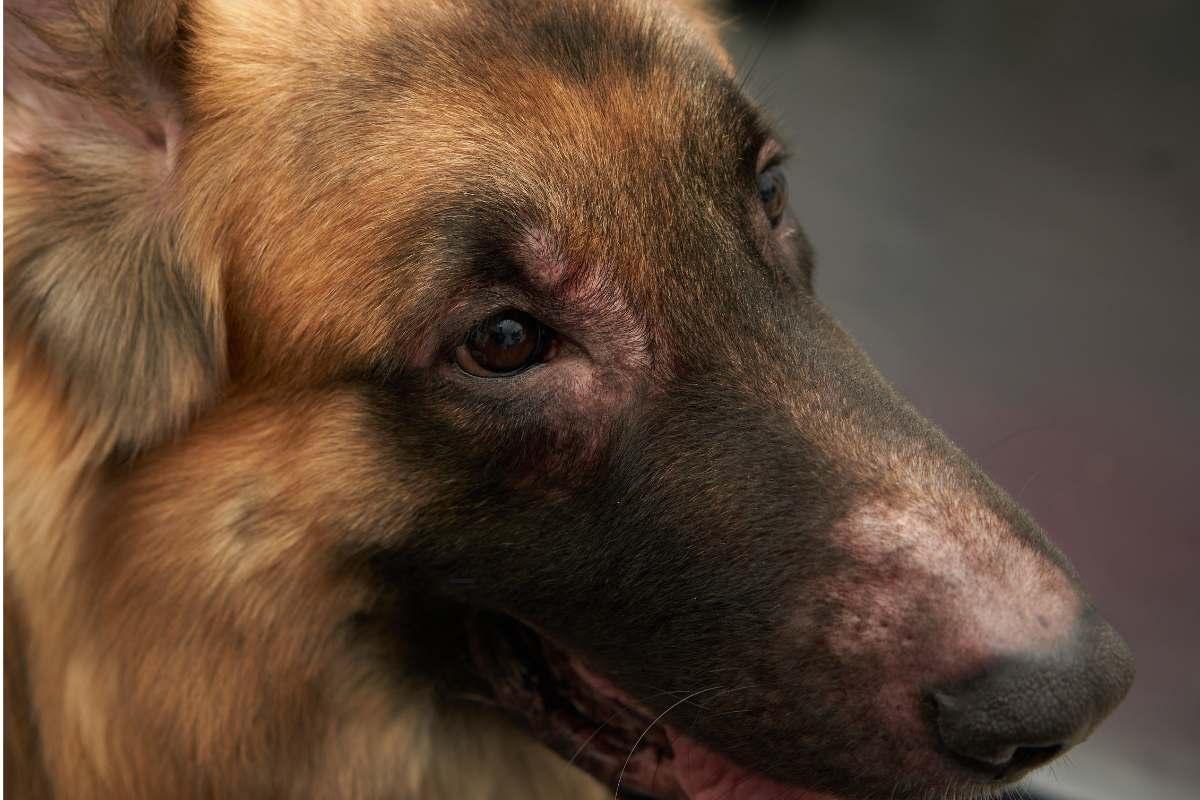Naturopathy is a holistic approach to health that uses natural methods to promote well-being. It is increasingly used to treat and prevent various ailments in animals, including allergies.
What is an allergy?
An allergic reaction in pets, whether seasonal or food-related, is an excessive immune response to common allergens such as certain foods, plants or even chemicals. These allergens can cause symptoms such as skin rashes, runny noses and allergic rhinitis. Naturopathy, by focusing on natural methods such as the use of essential oils with anti-inflammatory properties, aims to better manage and in the long term combat allergies by helping to eliminate allergens and reduce allergy symptoms in pets.
How do allergies in dogs manifest themselves?
Allergies in dogs are characterised by a range of symptoms, depending on the allergen responsible. Sources of allergy include environmental allergens, food, insect bites and medication.
On the skin, allergic dermatitis is often observed, manifested by redness, itching (pruritus) and sometimes pustules. Affected dogs may lick or scratch excessively, exacerbating the inflammation. Otitis externa reflects inflammation of the outer ear, characterised by itching and increased wax production. Pododermatitis, inflammation of the paws, can also occur, mainly due to contact allergens.
In the gastrointestinal tract, vomiting and diarrhoea can occur in response to food allergens, sometimes accompanied by gas and bloating. Respiratory symptoms such as coughing, sneezing and runny nose are possible, although less common, simulating allergic rhinitis. As for the eyes, conjunctivitis is an inflammation causing redness, itching and discharge.
Anaphylactic reactions are rare but serious, with breathing difficulties and swelling of the face or extremities, requiring urgent veterinary intervention. These reactions require veterinary attention to diagnose the allergen responsible and provide appropriate treatment to relieve symptoms and prevent complications.
How do cat allergies manifest themselves?
Allergies in cats are triggered when the immune system overreacts to an allergen, often harmless, present in the environment, food or following parasite bites. These reactions can vary depending on the cause and affect various systems in the body, manifesting themselves mainly as :
- Skin symptoms: including allergic dermatitis (inflammation, redness, swelling, itching), hair loss (alopecia) due to licking and scratching, skin lesions (patches, scabs, scratch wounds), and otitis externa (inflammation of the ear), often linked to food or environmental allergies.
- Respiratory symptoms: less common, such as coughing, sneezing, and runny nose or eyes.
- Gastrointestinal symptoms: symptoms of food allergy may include vomiting, diarrhoea, gas, bloating and abdominal discomfort.
- Altered behaviour: increased licking, scratching or chewing of certain areas, restlessness, lethargy and loss of appetite, especially if the allergy causes gastrointestinal pain.
It is crucial to consult a vet for an accurate diagnosis and appropriate treatment as soon as symptoms appear, including elimination of the allergen, administration of medication, dietary changes and supportive skin care.
How do horse allergies manifest themselves?
Allergies in horses result from an exaggerated immune response to often harmless allergens. These reactions can affect various body systems, with symptoms varying according to the allergen, the route of exposure and individual sensitivity. Dermatological signs such as urticaria, allergic dermatitis and eczema are common, affecting the neck, back, stomach and limbs. Respiratory disorders, such as equine asthma, manifest as chronic coughing, breathing difficulties and exercise intolerance due to inflammation of the airways.
Ocular reactions can cause allergic conjunctivitis, with itching, redness and clear discharge. Food allergies are less common but can cause diarrhoea and colic. In rare cases, anaphylaxis may occur, requiring urgent veterinary intervention. Diagnosis includes clinical assessment, medical history, skin and blood tests. Treatment aims to minimise exposure to the allergen and may include medications such as antihistamines and corticosteroids, as well as, potentially, immunotherapy.
What are the most common allergies in pets?
Pet allergies are reactions of the immune system to substances that are often harmless. They can manifest themselves through symptoms such as itching, sneezing and digestive problems. Allergies in animals are immunological reactions to specific antigens called allergens. These reactions can be triggered by various factors, which are detailed below:
- Food allergies: Food allergies result from an immune reaction to specific proteins present in the animal’s diet. Substances such as beef, milk, wheat and soya can be responsible for these reactions. Symptoms can include gastrointestinal problems, itchy skin and respiratory problems.
- Pollen allergies: Pollens from different plants, trees and grasses can also trigger allergies in animals. Symptoms can range from mild irritation to severe reactions such as asthma.
- Allergies to house dust mites: Dust mites, particularly those found in house dust, can cause allergies in animals. Mites consume dead skin cells and are frequently found in bedding, carpets and furniture. They can cause intense itching and chronic skin conditions.
- Chemical allergies: Certain chemicals present in the environment, such as detergents, perfumes and insecticides, can cause allergies in animals. The skin is often the first to react, leading to skin rashes and inflammation.
- Allergies to insect bites: Insect bites, particularly from fleas and mosquitoes, can also trigger allergic reactions. Reactions to insect saliva can lead to redness, swelling and persistent itching.
- Genetic factors and racial predisposition: Certain breeds of animal may be genetically predisposed to allergies. Understanding these predispositions can help in the diagnosis and treatment of allergies.





